The cow is not the only source of milk
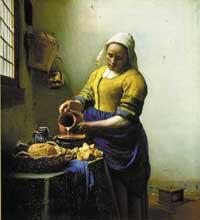
But man is an exception, both young people and adults drink milk. In addition, it has become an element of honor in gastronomy. In fact, milk consumption is currently highly specialized. For example, you can drink fat free milk. It is surprising. One of the peculiarities of milk is the presence of certain fats, necessary for the child. Adults do not want to give up milk, but want no fat. Is that not a huge contradiction?
From time to time opinions are heard contrary to milk consumption. The subject of the Internet has been widely addressed. Is it not child drink? That doubt is quite logical. However, you have to look at something more. Although the wise nature has designed milk only for children, adults drink easily, most without problems. But it has not always been so. The prehistoric man drank milk only as a child.

Surely adults did not assimilate milk. But in the Neolithic era man began to care for animals and, among other things, he learned that with cows and goats, milk was accessible. This food was exceptional and little by little they were drinking not only children but also adults. Thus, by evolutionary demands, adults developed the ability to assimilate milk, so the current situation is also understandable. Milk can also be a good food for adults.
Leadership of the dairy cow
The custom of milk in the diet of adults comes from livestock. The oldest documentation that gives account of the livestock activity is located around the 5.000 years. Animals lived with man in almost all their activities. For example, goat footprints are used to study human migrations. Many animals have been friends of the man, but little by little the cow has been imposed among milk producers. It is a fertile animal. Consequently, the current human being has a strong dependence on the cow, since 90% of the milk consumed in the world comes from the cows.
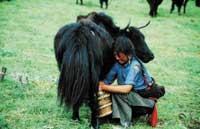
However, cows cannot grow anywhere. The desert and the highlands, for example, are not suitable for this animal. Therefore, humans in these areas have introduced milk from other animals into their diet. On the other hand, it must be said that not all types of milk cover all needs.
The shepherds of our mountains are an example of this. People who care for sheep herds have a perfect raw material to make cheese, among other things. However, sheep's milk has a lot of fat and is not as sweet as cow's milk. Therefore, many pastors, together with the flock, care for a few goats for the daily consumption of milk.
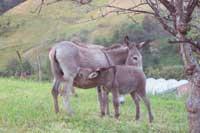
The villages of Estepa have traditionally fed with milk of mare, and they are no exception because the horses and donkeys can live in a very demanding climate, so they have always taken into account. For Mongol, the milk of mare is typical. In addition, XIII. For the twentieth century, rice and millet were added gradually to milk to obtain milk of dust that is cooked until it is cooked and allowed to dry. This manual process is described in the book of Marco Polo.
Donkeys have also given man a milk of great value. As an anecdote, you can remember what tradition says about Queen Cleopatra. The baths took them in donkey milk to have a soft and beautiful skin.
The miracle of camel milk
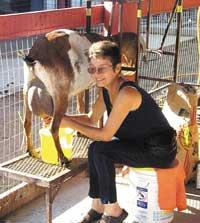
The desert villages have been caring for camel teams for a long time. In fact, this animal offers a great help. Besides being strong and hard, it provides raw material for everything that the human being needs. The camel also produces meat and milk, but the heat makes them lose quickly. Milk is sweet to drink at the time, but you can't save, the way to keep it without losing is to make cheese, but camel milk is not for that, because it doesn't cook. Now, scientists have found the way to make cheese; as a rennet, they have launched a product called camifloc in North Africa.
In the territories of the North, the reindeer, the flame in the Andes, the jacket in the Himalayas and the cebua in India are good examples of alternative milks. These animals do not give the same milk as the cows, but they do the necessary to supply the diet of the keepers.

In Italy there has been a special case from the Middle Ages. At that time the buffalo market was controlled by friar orders. XII. In the ecclesiastical documents of the twentieth century it is observed that buffalo was very common in the livestock of several European regions. Two centuries later, floods and pests greatly impoverished the lands and numerous lakes and marshes emerged in southern Italy.
In these areas agriculture was very difficult and diseases spread rapidly. To work in these places and live in general, buffalo is much more appropriate than the cow, since it adapts well to water and has greater resistance to diseases. Over time, the buffalo was dispersed in Italy, in the area of Tuscany they were cultivated for meat and in the south they were used mainly for milk. Following this tradition, today the buffalo grows in the territories between Rome and Naples, and the most outstanding product obtained from this animal is the mozzarella cheese, which has become a world star product for the manufacture of pizzas.
The highest proportion of glucids containing milk is lactose. The molecules of this sugar are the union of the other two smaller ones: glucose and galactose. Sugar used in the kitchen, sucrose, is similar, but substitutes galactose for a fructose molecule in its composition. With the exception of some marsupials, all mammals have lactose in milk, with lactose being the proportion that less varies from one species to another in the composition of milk.
In milk there are many types of proteins, most casein. Casein are molecules of similar structure, being in most species three or four. Unlike proteins from other foods, they are easily digestible in the intestine and contain essential amino acids for growth.
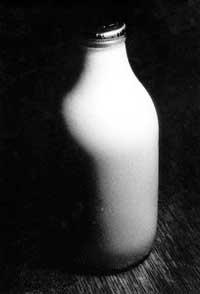
Casein is grouped in micelles, since separately they do not dissolve well in water. In addition, in these micelles there is water and minerals and other proteins accumulate around. These structures, therefore, are very important in the dairy industry.
On the other hand, the mother provides other proteins to the brood through milk. Among them are immunoglobulins, which work with antibodies.
Another important component of milk is lipids. In today's society these molecules are associated with health problems and the cow's milk of low proportion of fat is highly valued. However, at one time the situation was unfavorable and the highest value was given to milk of a large amount of fat.
Most of the fats in milk are triglycerides, while the amount of cholesterol is high. Therefore, the fat of the milk has gradually acquired a bad reputation. But lipids have two important requirements: on the one hand, they are an essential energy source for the child and on the other, they carry fat-soluble vitamins. Without fat, these vitamins do not enter the child's metabolism and can cause major growth problems.
The amount of fat of the milk varies a lot from the species to the species according to the needs of the breeding. The whales, dolphins and marine mammals have the highest proportions of fat in milk, with some ungulates having the lowest proportions. Normally the amounts of fat and proteins are highly correlated, that is, when the proportion of lipids is high, the proportion of proteins will also be high.
Milk is composed of other substances. The most abundant minerals are calcium and phosphorus. On the other hand, most vitamins, including fat soluble vitamins (A, D, E and K). On the other hand, in this great mixture are other components such as leukocytes.
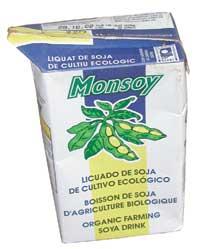
Cow's milk has sometimes been a substitute for women, but in the case of young children, pediatricians recommend not to do so. The reason is simple, the cow's milk is adapted to the needs of calves and not to children. We must not forget that the compositions of both milks are different. Many pediatricians ask mothers to breastfeed the child for at least twelve months. However, when they finish the maternal low and have to return to work many mothers stop breastfeeding, among other things because changes in habits can significantly reduce milk production.
In general, all types of milk contain the same basic ingredients. Breeding mainly needs sugars, proteins, lipids (fats) minerals and vitamins. However, man has developed many ways to modify his composition. Among others, he has invented vegetable milks. The best known is soy milk, but there are also almond milks, oats and rice. These "milks" are not authentic and pediatricians do not recommend them for children, since there is no control over their composition.
The small intestine to assimilate milk has to divide lactose, glucose, and galactose. Both compounds are easily metabolizable. However, if lactose is not divided, follow the path to the large intestine, where the bacteria ferment. This causes abdominal pain and other intestinal conditions.

Lactase divides lactose. It is a protein of the newborn mammal that, when growing, is slowly lost. The more adult it is, the lower the production of lactase. The adult, therefore, with the almost total loss of lactase, cannot assimilate milk and should remove it from the diet.
However, the human being has developed the ability to produce this protein in adulthood, taking milk as a basis for feeding. There are a few exceptions, as in some African countries, where milk has not been reached, and at present adults continue to suffer abdominal pain when drinking milk.





